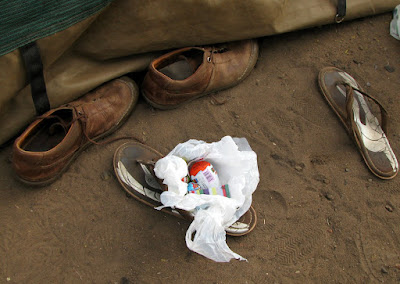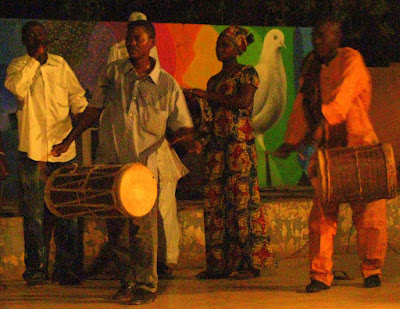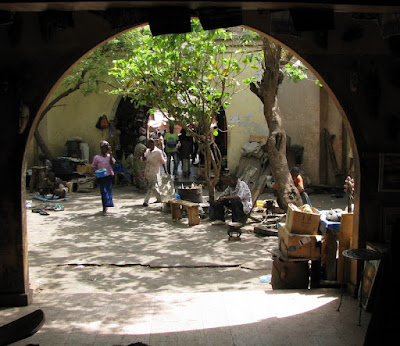…the tasteful perceptions on a first time overseas traveler
(and how awkward some situations can be!)
By Emelia Skye
Growing up on a dairy farm in rural South Australia, I am no stranger toroughing it at times; however, not having a lot of experience camping, I have always enjoyed what I would consider common necessities including a shower with hot and cold running water and a flushing toilet with paper and toilet seat inclusive…things I knew I would have to go without during the African Trails trip from London to Istanbul. I knew that I was going to have to prepare myself for several somewhat questionable bathroom situations! We are nearing the two month mark on our 10 month long trip and already I have been in some of the most unusual situations. As this is my first experience travelling overseas – just about everything is new, exciting and often unexpected.
One of my first memories of the trip is when Wilna and I tried to find the ladies loos in a small Gibraltar Café. The woman behind the counter, who spoke no English, pointed us in the direction of the toilets. However when we reached them, a lady shooed us away quite forcefully as they were being cleaned and pointed, without so much as a smile, across the building to where the other toilets were. I was quite busting at this point, saw the sign for ‘Femmes’ and hastily entered the room, only to find a man standing at the basin washing his hands who laughed at us and also shooed us out! Wilna and I, embarrassed, quickly left to check the sign on the door and sure enough we were right. The man came with us to check the sign…that’s when he realized his mistake, apologized in Spanish and left us to enter and do our thing in peace.
I have now learnt to always carry a small pack of tissues with me wherever I go, as I have now discovered that many of the countries we visit don’t believe that you need to wipe after you use the toilet…or they just believe that one should provide their own paper! Quite the shock when you aren’t prepared!
Another pleasant experience is what I like to call the ‘squatty potty’ – quite common in Morocco. These toilets are often uni-sex, of sub-hygenic conditions and quite often have roofs that make you feel as though you are Alice who just drank the mysterious liquid that makes you grow too big for the room, leaving your hunched over shoulders touching the roof before you even begin! Once you have finished your business, you must try to stand up (without knocking your head) to organize yourself, trying to touch as little of the place as you can, before filling the little plastic bucket under a small tap protruding from the side of the wall to delicately pour down the small hole in the floor, leaving the room in even more pristine condition than how you found it. What an experience.
Of my favourite experiences, is the ‘bush bathroom’. The situation changes of course depending on the scenery at the time, the time of day and the company we have! I have to say with all honesty that these are my favourite kind of bathroom when travelling around; you can walk for as long as necessary to find your perfect place to take a few mintues with nature. Unless of course we pulled the truck up along side of the road where there are absolutely no trees, no shrubs, and no rocks, nothing to conceal you or give you any privacy what-so-ever. In these situations, of which there have only been two, the girls call which side of the truck they prefer and behind the wheel of the truck is the prime pozzie!
Another memorable experience was all but 500 metres beyond the Mauritanian border crossing, where the truck pulled up amongst the piles of rubbish and rusting, burnt out old cars, next to a large mound of rocks and litter. Once again, I was absolutely busting and was the first to rush behind the mound to visit the ‘ladies room’. The other girls must have been just as needy for a stop, as I was stopped mid-stream by Suzanne and Elisa running behind the mound to join me. Wilna soon appeared and before we knew it, the four of us had let our inhibitions go and were peeing in unison, behind a pile of rocks, just inside the Mauritanian border. Who would have thought?!
There are times when some or all of the small shovels that live behind a bar on the door of the truck are AWOL, indicating that other Trail members are finding their own bush bathrooms. At times such as these, one definitely does not want to suddenly see themselves faced with the embarrassing situation of stumbling upon another person. For this reason, and to allow all African Trail members to ‘go in peace’, I have very discreetly decorated three long sticks that have affectionately been named ‘Dumpy 1, 2 and 3’. These can be taken out on early morning wanders and placed just before a spot of choice as a clear indication to steer well clear. This new process of using Dumpy has been absolutely flawless and proves to be an improvement to the bush bathroom situation…as long as the modestly decorated sticks endure life on the truck!
I am sure there will be many more interesting situations and experiences to come as we continue our travels…but however interesting the situations, I’m sure we can always look back on them with a smile and sometimes an appreciation that we will never have to go back there again!
 Who? Emy Mitchell, the tall elegant Australian girl by Orm's (bearded) side - who does NOT appreciate flat geography.
Who? Emy Mitchell, the tall elegant Australian girl by Orm's (bearded) side - who does NOT appreciate flat geography.What? This ethereal beauty of distant Sri Lankan descent, a tiny sparkle on her face (check the left profile), a gorgeous giggle, and the most amazing innocence in dealing with people. Our reminder on the trip of what life is without cynicism.
Where? Roxby Downs (It may, may - may just be on Google Earth, but if not, get a detailed map of South Australia, look for the driest place and the reddest sand
Tattoos? Too indecisive as to where, when, what and why...
Three Wishes? 1. For every meal on every trip to be her best.
2. To have Orm personally fan her every night on the trip.
3. For there to magically be a fresh water river around the corner every week or so.































































